On the hunt for Italy’s greatest plate of pasta.
This feature was an early inspiration for the book Pasta, Pane, Vino: Deep Travels through Italy’s Food Culture. Matt’s search for the perfect ragu features heavily in the Bologna chapter of that book but with updates and new writing. You can buy the complete book on Amazon or IndieBound.
La Grassa. The fat one. Bologna has earned its nickname like no other place on earth. The old city is awash in excess calories, a medieval fortress town fortified with golden mountains of starch and red cannons of animal fat, where pastas gleam a brilliant yellow from the lavish amount of egg yolks they contain and menus moan under the weight of their meat- and cheese-burdened offerings.
I long dreamt of nuzzling up to Bologna’s ample waistline. As a high school kid with a burgeoning romance with the kitchen, I was hungry to consummate my love with what I regarded as the world’s finest cuisine. The intermediary was a young, heavyset Italian-American named Mario Batali. Every morning at 10:30 during summer break, I sunk into our Chianti-red couch and watched the chef with orange clogs and a matching cheddar ponytail motormouth his way across Italy, breaking down the regional cooking of the country in exquisite three-plate daily tasting menus. I wanted to taste the swollen breads of Puglia, the neon green pestos of Liguria, the simmering fish stews of Le Marche. The pepper-bombed pastas of Lazio. But above all, I wanted to feast on the Italy of Molto Mario’s most spirited episodes, the Italy of Parmigiano (“the undisputed king of cheeses!”), of mortadella and culatello, and, of course, the Italy of ragù alla bolognese, the most lavish and revered of all pasta creations.
It took a broken heart to bring me to Bologna’s bulging belly. I fell in love with a girl in Barcelona who didn’t share my lofty feelings, so I escaped to Bologna to drown my rejection in a bottomless bowl of meat sauce. For three weeks I sought out ragu in any form possible: caught in the tangles of fresh tagliatelle, plugging the tiny holes of cheesy tortellini, draped over forest green handkerchiefs of spinach lasagna.
Since the dawn of Christianity, Emilia Romagna—birthplace of ragu, home of the city of Bologna—has been one of Europe’s wealthiest regions, a center of trade with a heavy agricultural presence. Few things say wealth as loudly as a sauce comprised of three or four cuts of meat, two kinds of fat, wine, milk, and a flurry of one of the world’s most treasured cheeses—all served on a pasta so dense with egg yolk it looks a sunset run through a paper shredder.
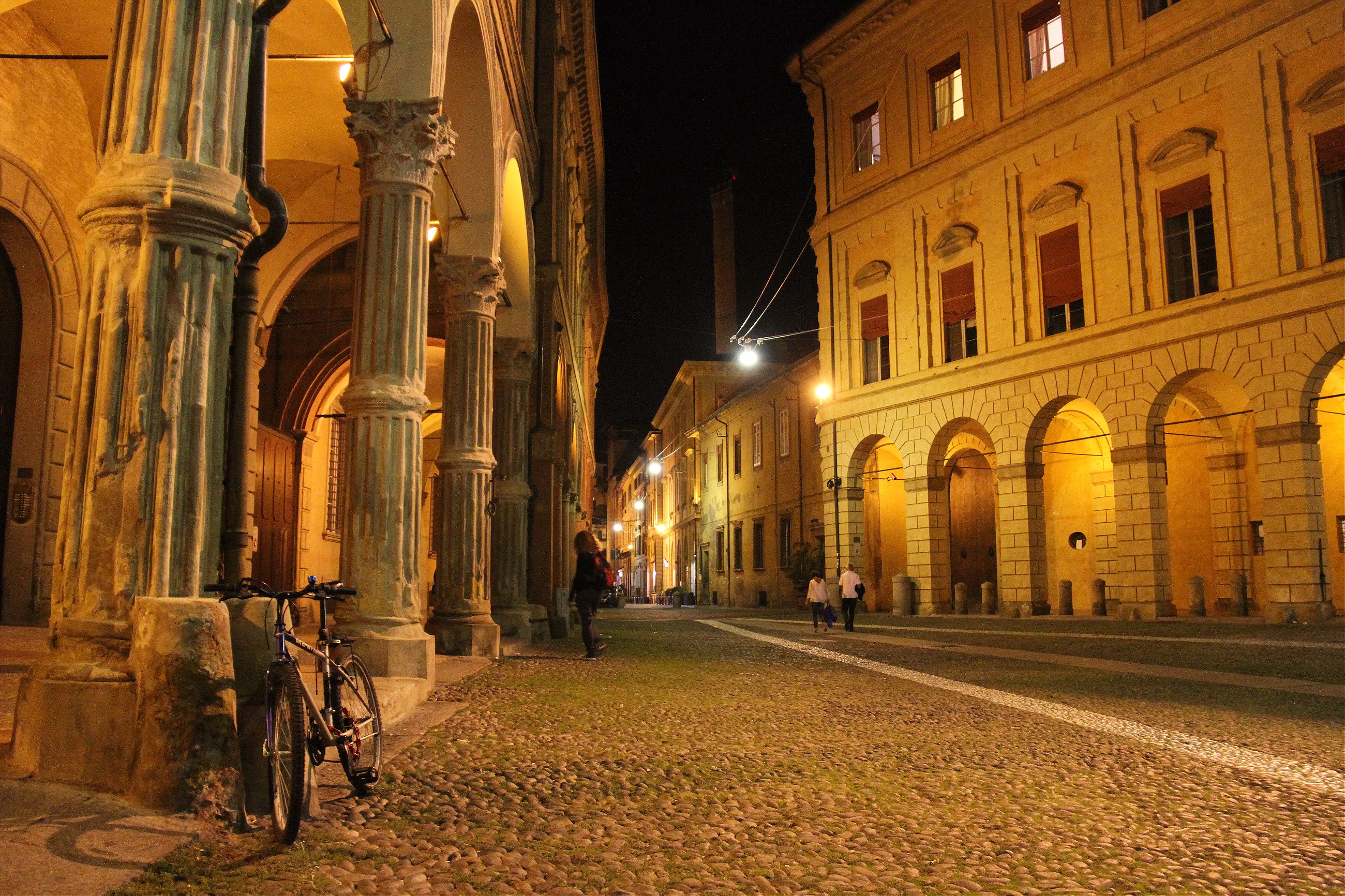
Slow-simmered meat stews were common throughout Italy in the 15th and 16th centuries, but pasta, a luxury enjoyed by the upper class until the industrial revolution made wheat more accessible, didn’t enter the equation until the early 19th century, when the aristocrats of Emilia Romagna found it in their hearts and wallets to combine the two. Pellegrino Artusi, a successful businessman and noted gastronome, is often credited with the first published recipe for ragù alla bolognese, dating back to 1891 in the self-published The Science of Cooking and the Art of Fine Dining. Not satisfied with the panoply of meats and cooking fats, Artusi recommends goosing the dish with porcini, chicken livers, sliced truffles, and a glass of heavy cream.
Just as Artusi’s version reflected his privileged times as a wealthy merchant carousing about Emilia Romagna in the mid 19th century, ragu has always been a barometer of sorts, a dish that closely mirrors the conditions of its makers. Substantial meat-heavy ragus took hold in the relatively fat times of the early 20th century, but in the hardscrabble years after World War II, pasta found itself nearly naked, slicked with lard and vegetable scraps and little else. Only as Italy climbed out of the post-war depression in the 1950s and 60s did meat rejoin the script as the recipe’s central constituent.
Over the years, other parts of Italy developed their own take on the bubbling meat sauce. (And let it be said now that sauce is a misnomer—sauce implies a level of liquidity that you’ll never find in a true ragu. Instead, the Italians would call it a condimento, a condiment meant to accompany the pasta, not smother it relentlessly) Ragù alla Barese, from the heart of Puglia, is made from thin slices of meat— pork, beef, lamb, even horse—with the sauce served over orecchiette, ear-shaped pasta, and the protein eaten separately. Italy’s second most famous ragu after Bologna’s belong to Naples, where a giant vat of tomato sauce is used to render huge chunks of meat fork-tender (the inspiration for Italian-America’s Sunday gravy). But the scope of ragu goes well beyond these famous offshoots: Travel Italy today and you’ll find ragus made from fish, duck, and wild boar, laced with everything from cumin to dried chili to chocolate.
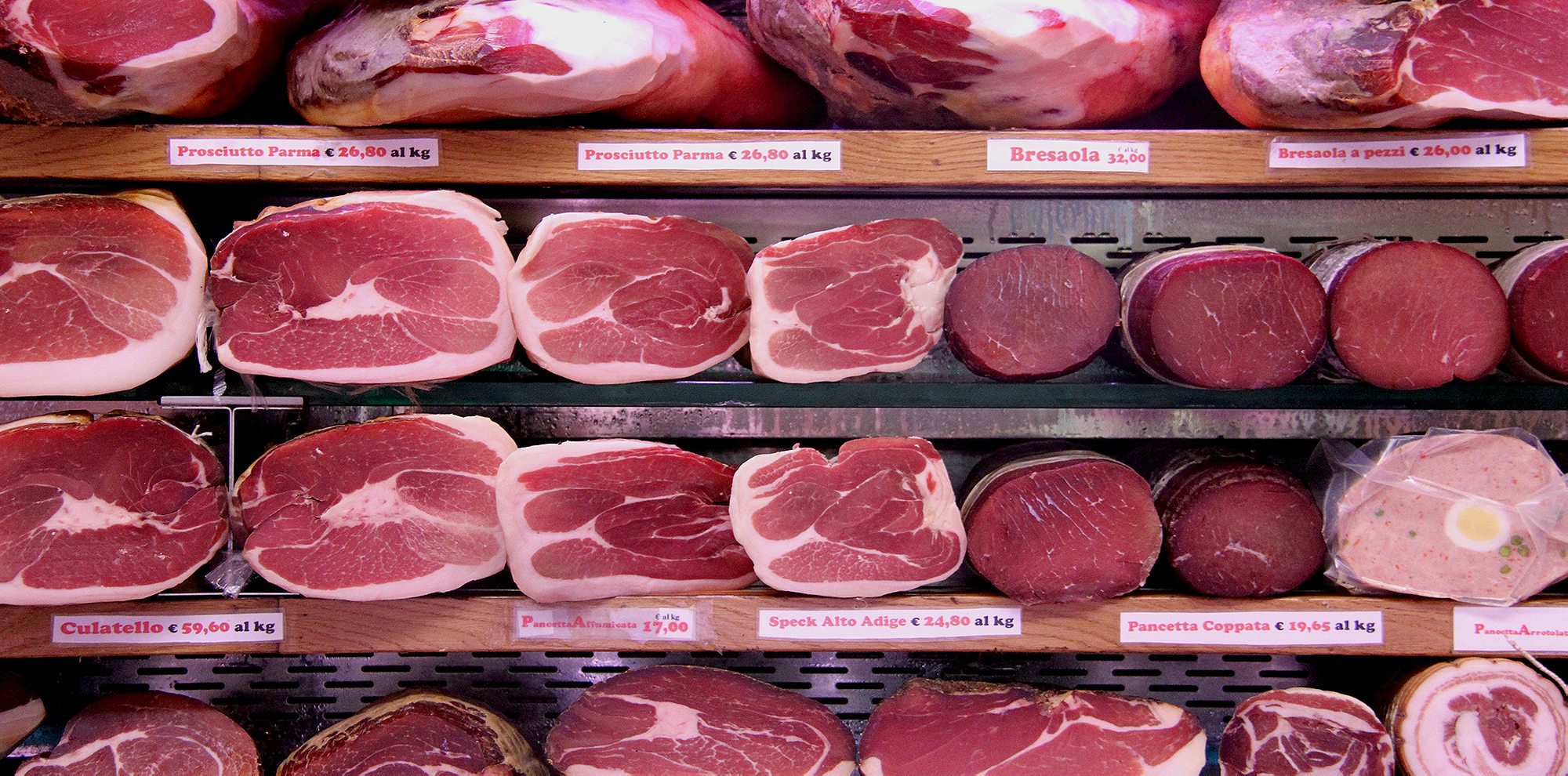
Through all these years and all these iterations, Emilia Romagna has remained ground zero for Italy’s ragu culture, but even here, the differences between one village’s ragu and the next can be a catalyst for controversy and recrimination.
Of course, uniformity was never part of the equation: from the start, ragù alla bolognese has been a reflection of subtle differences in terrain, weather, and wealth that defined one town from the next throughout the region.
Today, the list of variables runs longer than the list of ingredients. Is ragu pure pork? Pure beef? A mixture? Is the meat ground, chopped by hand or braised and shredded? Does pancetta or another type of cured pork product belong in the mix? How about liquid: stock or water, red wine or white? In some parts of the region, where dairy cows are aplenty, milk makes it into the sauce; in other parts, it’s considered sacrilege. Spices: salt, maybe pepper, usually bay leaf, sometimes, in rare cases, nutmeg.
The biggest source of dispute, undoubtedly, is the tomato: How much, if any? Fresh, canned, or tomato paste?
So is there one true ragu? One best way to make it? One expression of this meaty amalgam that best represents the DNA of this region? That’s what I’ve come back to Emilia Romagna to find out.
Alessandro was my truffle dealer
Twenty few miles outside of Bologna, at a roadside restaurant, I meet Alessandro Martini, short and thick and boiling over with life. He runs Italian Days Food Experience, a full-day binge on Emilia Romagna’s most famous ingredients: cured meats, Parmigiano Reggiano, aceto balsamico di Modena (“12 years aging minimum!” as Alessandro likes to say). His Facebook page is dominated by pictures of tourists feeding each other pasta, hoisting massive hunks of cheese, slurping 100-year-old balsamic from plastic spoons. On any given day, depending on the whims of TripAdvisor’s algorithms, Alessandro’s tour is the most popular activity in all of Europe.
For a short period in 2010, Alessandro was my truffle dealer, sending freshly-dug specimens across the Mediterranean one kilo at a time, which I would keep under my pillow for a few days until my dreams smelled of tubers, before selling them off to Michelin-starred chefs around Barcelona. I remember waking up to messages from Alessandro during those heady days after an early morning truffle hunt: “I have the white gold!”
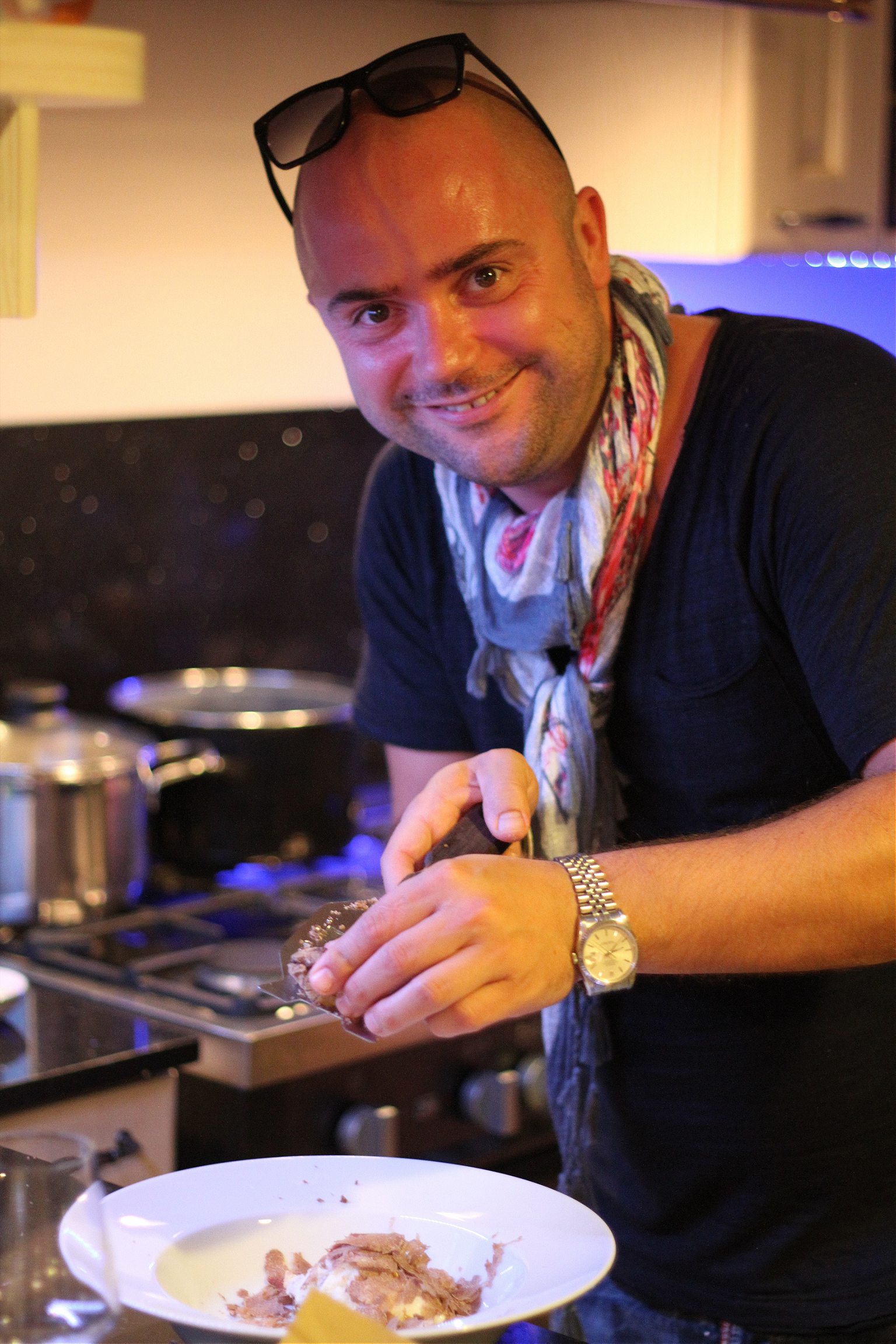
Alessandro hails from the heart of ragu country and lives for these types of belt-loosening food adventures. This is a man who celebrated the birth of both his son and his daughter by gifting them batteries of aceto di balsamico—a series of wooden barrels that hold balsamic vinegar as it ages over the course of a lifetime. When I emailed him two weeks before the trip and asked him to be my guide, his answer was short and definitive: “Si! Si! We go to see the best Italian grandmas and the ragu kings. Don’t worry!”
We start in the hilltop town of Zocca at Ristorante Bonfiglioli. An hour before lunch service, the kitchen looks like what I see when I close my eyes and see Italy at night. All women, mostly grandmas, all performing backbreaking acts of an intensely nurturing and homemade nature. One rolls out long sheets of emerald green spinach pasta for lasagne verde. Another fries little rectangles of dough for gnocchi fritti. A pair of older women in bonnets stuff hundreds of pasta squares with a mix of ground pork, mortadella, and parmesan before pinching them into tortellini. In the corner, over a lone burner, a younger woman stirs a pot that, judging by the savory perfume, can only contain one thing.
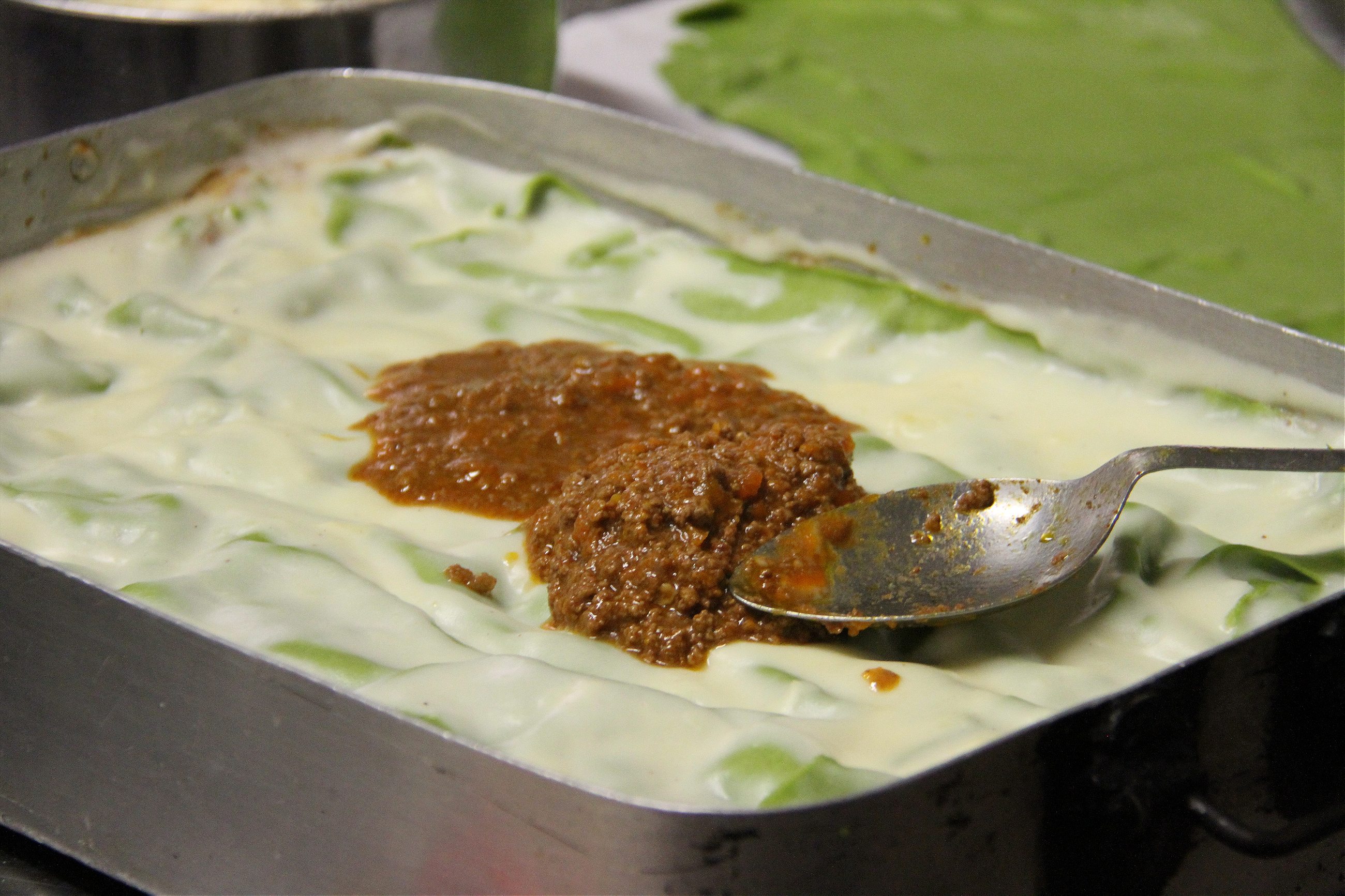
When Alessandro announces that we’ve come to talk ragu, the flurry of activity comes to a sudden halt and the women gather around the mountain of tortellini.
“Well, what do you want to know?” the young sauce-stirrer asks.
“Everything,” I say.
And that’s pretty much all it takes. The women launch into their personal recipes, exchanging barbs about protein choices and seasoning philosophies. Finally, Zia Maria Lanzarini, the oldest cook in the kitchen, quiets the crowd and offers some well-earned wisdom.
“The meat can change based on the circumstances. The liquid can, too. But the one thing a ragu never has in it is garlic.”
The only other point of agreement among the group: ragu should be made with pignoletto, an acidic, lightly fruity wine that you can see growing from the restaurant’s windows. “It’s a Bolognese sauce, it should be made with a Bolognese wine.”
The official version at Bonfiglioli, what Alessandro calls “the noble ragu”, would be a source of controversy for most in the area—including, apparently, a few of the cooks in this kitchen. It is made from 100 percent beef, a rarity in the region but an act of recycling in a restaurant with mountains of beef scraps leftover from the strip steaks they are famous for. Those scraps are combined with onion, carrot, and celery, a few glugs of pignoletto, plus peeled and seeded fresh tomatoes, and simmered for four hours, the cook adding water at her discretion if the ragu starts to dry out.
“The cooking is the most important part is that it must be slow,” says Signore Elena, Maria’s tortellini accomplice. “It’s the slow cooking that gives the sauce its flavor.”
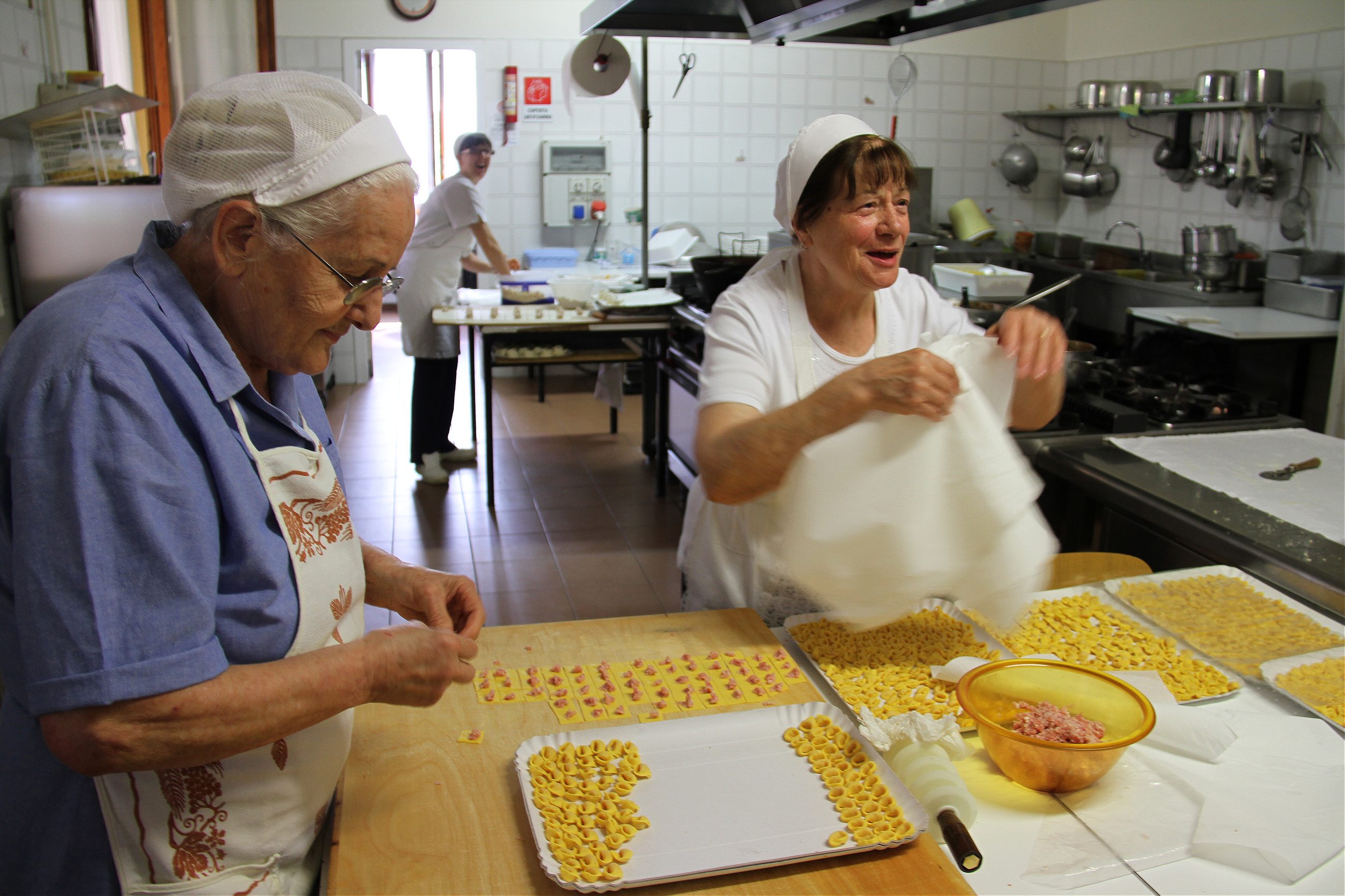
She passes me a spoon and the ragu, a gentle orange color from the emulsion of tomato and fat, sits up like a well-trained dog. It tastes of the mineral intensity of good Italian beef corrupted by nothing more than light tomato acidity and the sweetness from the vegetables. The women try to ply us with other delights of the Emilian kitchen, and I start to give in, but Alessandro intercedes and ushers me to the door. The day is young.
Three hilltops over, at Trattoria Garofani Lina, we sit down to a light lunch of spinach gramigna, hollow fish hooks of pasta, with sausage ragu; polpette, massive, dense meatballs made from pork, beef, chicken, mortadella and an absurd amount of parmesan; thick shanks of osso buco; tomato-braised rabbit al cacciatore; and tortellini in brodo.
We are surrounded by cyclists; runners; large, spirited families—people in need of sustenance. Alessandro loves this restaurant, and for good reason: the food is intensely satisfying, especially the chewy pile of gramigna, hiding nubs of sausage in its knots, and the tortellini, another Emilia Romganan specialty, which are belly buttons of ground pork, mortadella, and parmesan afloat in a clear, soul-soothing chicken broth.
But after a few bites of the ragu, he flashes me a look of disappointment: “I’m sorry my friend. The ragu is good, it is fine, but there is too much doppio concentrato. Tomato paste has no place in ragu!” To hear Alessandro say these words about a restaurant he himself selected, one in which the owners greet him with hugs and ask about his children, underscores just how hard it is to please an Italian—especially with ragu.
As we waddle our way back towards his van, he tells me: “These are great examples for a beginner, but later, I will show you the true ragu.”
A civilization seemingly constructed for the sole purpose of eating
The rest of my week in Emilia Romagna is a blur of ground pork and durum wheat. I spend days in Bologna, plodding from one restaurant to the next, faithfully ordering tagliatelle al ragu even when my stomach cries out for clear liquids or a few green leaves of vegetation.
Bologna is my kind of town: ancient in its cobbled avenues but youthful in its constituency, big enough to capture a certain urban energy, but small enough to never need anything other than your two feet to take it all in. Above all, it’s a civilization seemingly constructed for the sole purpose of eating.
Everywhere you turn you will see signs of its place at the top of the Italian food chain: fresh pasta shops vending every possible iteration of egg and flour; buzzing bars pairing Spritz and Lambrusco with generous spreads of free meat, cheese, and vegetable snacks; and, above all, osteria after osteria, cozy wine-soaked eating establishments, from whose ancient kitchens emit a moist fragrance of simmered pork and local grapes.
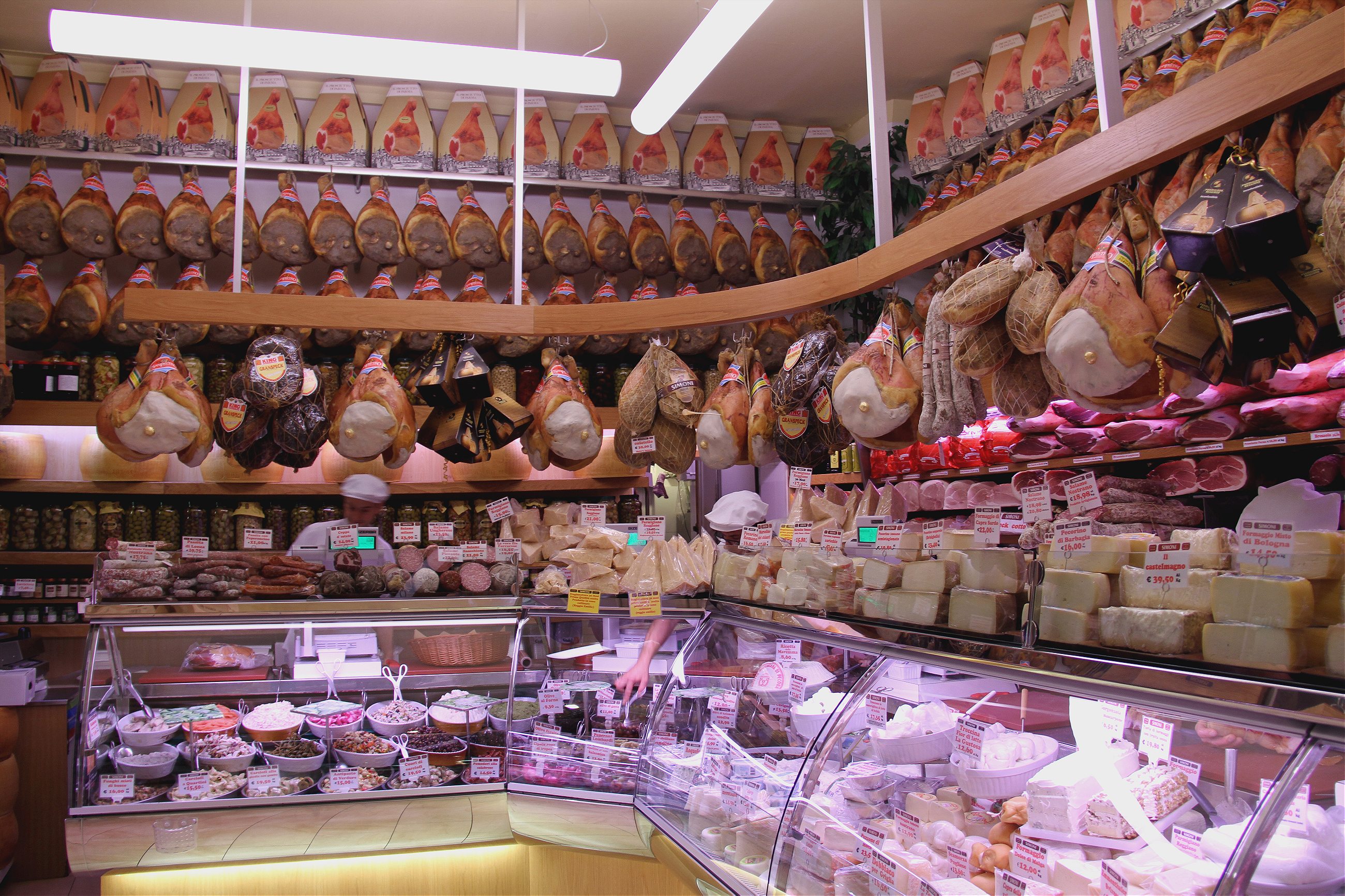
Osteria al 15 is a beloved dinner den just inside the centro storico known for its sprawling plates of charcuterie, its crispy flatbreads puffed up in hot lard, and its classic beef-heavy ragu tossed with corkscrew pasta or spooned on top of béchamel and layered between sheets of lasagna. It’s far from refined, but the bargain prices and the boisterous staff makes it all go down easy.
Trattoria Da Gianni, down a hairpin alleyway a few blocks from Piazza Maggiore, was once my lunch haunt in Bologna, by virtue of its position next door to my Italian school. I dream regularly of its bollito misto, a heroic mix of braised brisket, capon, and tongue served with salsa verde, but the dish I’m looking for this time, a thick beef-and-pork joint with plenty of jammy tomato, is a solid middle-of-the-road ragu.
The best ragu I taste is a white ragu of rabbit folded between a dozen thin layers of lasagna, served at Pappagallo, a polished restaurant in the shadow of the two towers that climb from Bologna’s center. It is a paradigm of sophistication and refinement next to the heavy-hitting classic versions, but with bunny as its base, it is not a ragu that could bear the name of this city.
Any of these dishes would qualify as the best plate of pasta in your town or my town or any town outside of Italy, but there’s nothing that makes me want to change my return flight. Eventually, the Bologna ragus all begin to bleed together in a delicious but indiscernible pool of animal fat.
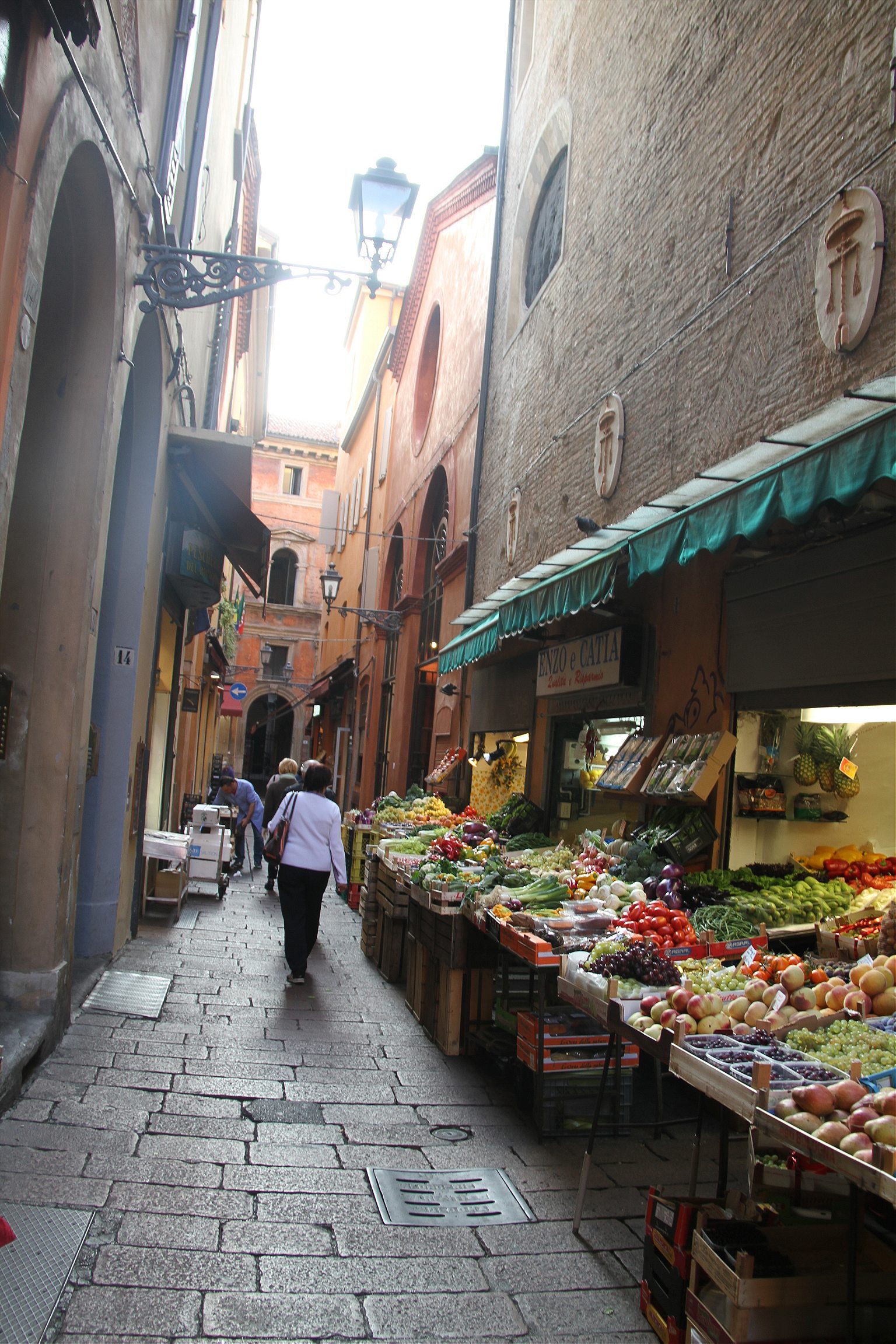
Alessandro has a simple explanation for my conundrum: “Bologna is not where you will find the best ragu. Too many tourists, too many students, not enough nonne. You must come with me to my town.”
Savigno is a lovely little village of 2,000 people nestled in a valley framed by rivers and oak trees and the gentle humpbacks of humble vineyards. Beyond being the capital of the region’s white truffle industry, Savigno is also a major pillar in Emilia Romagna’s ragu culture.
At Amerigo dal 1934, a restaurant famous throughout the region for its slow-simmered sauces and truffle-driven cuisine, Alberto Bettini and his family before him have spent the past 80 years refining the region’s most famous dish.
“There are thousands of recipes for ragu,” Alberto says. “I can’t tell you one is right and the other is wrong. This is Italy: if you go 5 kilometers from here, you’ll find a completely different ragu.”
Nevertheless, a few axioms hold true across the spectrum of possibilities. Above all, Alberto espouses what could be the bedrock ethos of Italian cuisine. “The materia prima is the most important part. You can’t make good ragu with bad ingredients.”
His ragu begins the same way all ragus begin: finely diced onion, carrot, and celery sautéed in olive oil. “It’s important to really caramelize the vegetables. That’s where the flavor comes from.”
Later comes two pounds of coarsely ground beef (“from the neck or shoulder—something with fat and flavor”) and a pound of ground pork butt, browned separately from the vegetables, and deglazed with a cup of white wine (pignoletto, of course). Peeled tomatoes, tomato paste, bay leaves and three hours of simmering over a low flame. Seasoning? “Salt. Never pepper.”
In the dining room, after an array of truffle-showered starters, Amerigo serves us three ragus—a blind tasting of today’s and yesterday’s sauce, along with a jarred version he sells in upscale markets, so we can judge the effects of time and temperature on the final product. He doesn’t serve the ragu on tagliatelle, though, but on little rounds of toasted bread—the better for us to appreciate the subtleties of the sauce, he says.
Alessandro and I both immediately choose the day-old ragu. It’s not dramatically different, but the flavors are deeper, rounder, more harmonious. In both you taste the quality of the meat, the silken texture from the long simmer, the ghost of bay. It’s a lovely creation, but there is perhaps too much tomato sweetness for a purist like Alessandro’s taste. He’s happy, but not euphoric—which is a state he hits a few times a day when he’s eating and drinking well.
For Alessandro, we seem to be perpetually one or two steps away from the one true thing, constantly circling the simmering pot, as if the dozen ragus we eat together are all preludes to a more realized vision. “Come, my friend. I will show you how we do it at home.”
As we walk through Savigno, the copper light of dusk settling over the town’s narrow streets, we stop anyone we can find to ask them for their ragu recipe. A retired policeman says he likes an all-pork sauce with a heavy hit of pancetta, the better for coating the pasta. A gelato maker explains that a touch of milk defuses the acidity of the tomato and ties the whole sauce together. Overhearing our kitchen talk below, an old woman in a navy cardigan pokes her head out of a second story window to offer her take on the matter: “ I only use tomatoes from my garden—fresh when they’re in season, preserved when it gets cold.”
Inspired by the Savigno citizenry, we buy meat from the butcher, vegetables and wine from a small stand in the town’s plaza, and head to Alessandro’s house to simmer up his version of ragu: two parts chopped skirt steak, one part ground pancetta, the sautéed vegetable trio, a splash of dry white wine, and a few whole canned San Marzano tomatoes.
“People talk about materia prima, materia prima, then they dump in a bunch of doppio concentrato. Vaffanculo!”
We leave the ragu to simmer and race off into the hills above Savigno to meet with Alessandro’s truffle dealers (“the truffle season doesn’t start until Tuesday, so don’t tell them you’re a journalist”). The sauce we return to, one that took all of 15 minutes of active preparation to create, is straightforward and beautifully balanced, an honest expression of the handful of ingredients we put into the pot.
It’s clear that after years of dedicated pasta consumption across all corners of this region, Alessandro has learned a few things about ragu.
“We’re getting closer,” he tells me.
The ragu at Osteria Francescana takes nearly 72 hours to make
The tagliatelle al ragù at Osteria Francescana in Modena stands six inches tall and costs $55. It also takes a battery of chefs and nearly 72 hours to make. Its height and price and layers of manipulation, at the very least, are befitting of a restaurant of Francescana’s stature: it has three Michelin stars and is currently ranked number three in Restaurant magazine’s list of the World’s 50 Best Restaurants.
Massimo Bottura, Francescana’s wild-eyed Captain Nemo, is no stranger to controversy when it comes to his treatment of the sacred pillars of Italian cuisine. When he first opened Ostería Francescana in 1995, Modenese grandmas were lining up to bash him with their rolling pins. One of his first enduring creations, a dish that morphed five different parmesan cheeses into five different textures (a 24-month pudding, a 50-month “air”), prompted the type of rabid public reactions you’d expect for a politician selling state secrets to the enemy.
More than any cuisine in the world, Italian food is built around an almost religious reverence for tradition: dishes pass from one generation to the next without as much as a grain of salt out of place. Part of that comes from the belief that Italian cuisine is already a fully realized vision, a museum-worthy collection of perfectly conceived dishes that can only be weakened by modern intervention. It’s not untrue: Few people on this planet can do as much with five ingredients as the Italians. Cacio e pepe, pasta carbonara, pizza margherita: in their most honest iterations, they are near-perfect foods, deeply revered as expressions of the richness of Italian culture, and most God-fearing countrymen will be damned to watch a half-mad chef fuck with their formulations in search of his own stardom.
But Massimo—a man who finds culinary inspiration in Walt Whitman and Miles Davis—never saw it like that. Like the heavyweights of the post-modern cooking world—Ferran Adria in northern Spain, England’s Heston Blumenthal—he sees food as a medium for man’s greatest ambitions: experimentation, transformation, accelerated evolution. “We don’t want to lose our history, but we don’t want to lose ourselves in it either. That’s why we are always asking ourselves questions about the best way to do things.”

The best way, according to Massimo, isn’t always the traditional way, and that didn’t sit well with certain people in this country, especially in conservative Modena. It wasn’t until Massimo won over international critics and achieved global fame that he managed to convince locals. “Suddenly, they started to defend me.” (And for anybody that continued to doubt him, he won the gold medal for best balsamic vinegar in Modena, the most revered craft in one of the most tradition-driven cities in Italy—a barrel-aged middle finger to those who think he only knows how to manipulate.)
He’s in the middle of recounting his vinegar triumph when an old man with a bike at his side peaks his head into the door to ask Massimo a question. “Mi scusi, maestro! Maestro!” The chef stands up from his desk and greets the man like a great don of the neighborhood. When he returns, he flashes a grin and raised eyebrows: “See that? Now they call me maestro!”
The master has strong opinions about everything, especially ragu. While the differences from restaurant to restaurant and grandma to grandma tend to be granular, especially to the outside eater, Massimo’s two main pillars of ragu are nothing short of controversial in this highly charged world. First, he insists the meat shouldn’t be ground, but rather cooked in large pieces, then shredded by hand. “99 percent of ragu starts with machine-ground meat. But why?” Instead, he insists that big pieces of braised meat give deeper flavor and better texture to the final dish.
Tomato is used to cover up bad ingredients
The Second Law of Ragu according to Massimo is even more explosive: no tomato. “We never had tomatoes in Emilia Romagna, so how did they end up in the sauce? Tomato is used to cover up bad ingredients.”
In some dusty corner of the Emilian culinary history Massimo’s version may have its antecedent, but the ragu he fabricates is a severe departure from everything I’ve tasted so far. While the individual components of the dish constitute a showcase of the avant-garde technique and fuck-the-rules philosophy that characterizes so many of the world’s most-lauded restaurants today, the final result tastes deeply, gloriously of ragu.
“Vision is the crossroad between the rational and the emotional,” says Massimo, in one of his frequent moments of existential reflection in the dining room. The rational mind says that hand-torn meat rich in gelatin will make a lusty, powerful sauce with no need for excess ingredients. Emotion tells him that it must still look and taste like home.
Later in the meal, the full extent of Massimo’s whimsy-driven modernist vision will be on display—in a handheld head of baby lettuce whose tender leaves hide the concentrated tastes of a Caesar salad, a glazed rectangle of eel made to look as if it were swimming up the Po River, a handful of classics with ridiculous names like “Oops I Dropped My Lemon Pie”—but it’s the ragu that moves me most. The noodles have a brilliant, enduring chew, and the sauce, rich with gelatin from the tougher cuts of meat, clings to them as if its life were at stake.
Most Italians would laugh at the price tag and blush at the modernist art-strewn room in which it is consumed—a poor replacement for their nonna’s kitchen, they’d say—but with a twirl of a fork, the sculptures and the canvases and the credit card payments would disappear and all that would remain is a taste of childhood.
Time and nostalgia add intensity to the flavors of our earliest memories, and in many ways, the mission of modernist kitchens playing with sacred staples of home cooking is to find ways to make the reality live up to the impossibility of the memory. In the case of Massimo’s ragu, that means making the noodles with a thousand egg yolks then cooking them in a concentrated parmesan broth. That means braising nothing but the richest cuts of meat at very low temperatures for very long times, then pulling them apart by hand to make a sauce of extraordinary depth and intensity. That means twisting the noodles into a tight spiral so that the pasta towers above the plate, the same way it does in the memories of those that eat it.
While I work my way down the tower to the bottom of the bowl, all I can think about is that this is why so many of us fantasize about being Italian, because to be Italian means to have memories that taste of this plate of pasta.
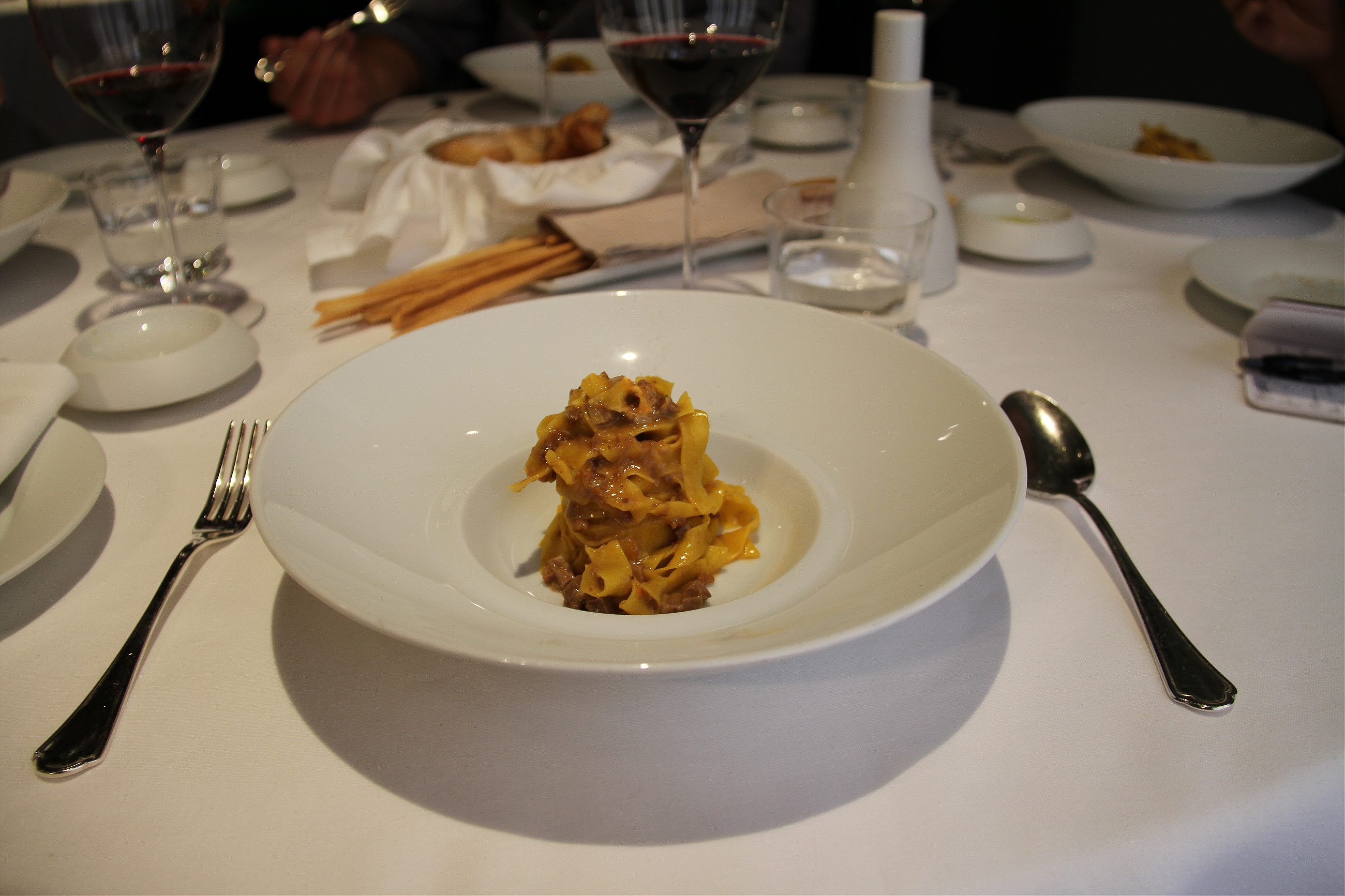
At 5:30 pm in the village rec room of Savigno, a cabal of ragu-making grandmas has assembled at a long wooden table. Alessandro has convened an emergency council, calling on the time-tested nonne of this scenic town to hopefully bring a final bit of clarity to the murky issue of Emilia Romagna’s slow-cooked sauce. He seems concerned that I still haven’t fully understood ragu—that perhaps my mind has been clouded by the tourist-friendly osteria of Bologna and the Michelin-friendly pageantry of Modena. “Don’t you worry, amico. If anyone knows something about making ragu, it is this group of nonne.”
It is a comic book cast of grandmother shapes and sizes: There’s Lisetta, tall with a thick wave of black hair. Maria Pia, midsized and modest and crowned with a dark half-fro. Anna #1, short, plump, square-faced and generously jowled. And Anna #2, smallest in size, largest in stature among the old ladies, a woman who not only directed the famous pasta program at Amerigo 1934, but twice traveled to Tokyo to bring ragu to the people of Japan. “I walked into the subway and there I was, larger than life, making pasta on a Japanese billboard. Madonna!”
Anna’s far-flung adventures notwithstanding, these are women born and raised in this fertile valley of golden grapes and hidden tubers. They have ragu in their soul.
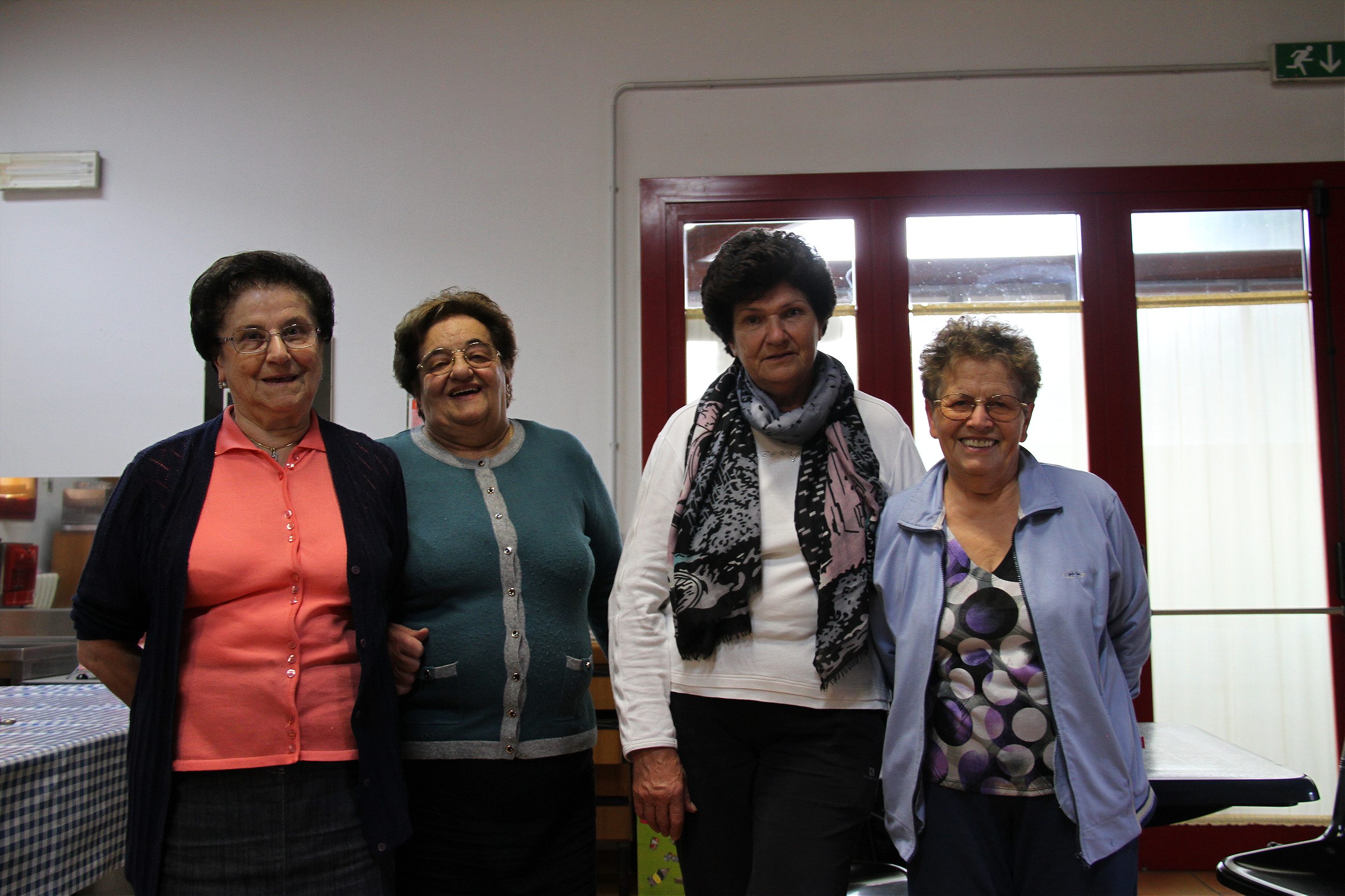
I have a long list of questions that have been vibrating in my head over the past week—about the deployment of dairy, the browning of proteins, the ever-controversial issue of tomato. But ultimately, I manage only one feeble query—“how does everyone here make their ragu?— before the council takes over and I’m rendered a silent spectator.
“Piano piano,” says Lisetta, slowly, step by step. “You cannot rush a good ragu.”
“The 1950s were full of misery,” says Anna #2. “Back then ragu was just a bit of tomato and onion and lard. It changed slowly over the years when people had more money to buy meat. A little pork, a little pancetta.”
“A proper ragu should be made with half pork, half beef,” says Anna #1.
“No, no! One quarter pork and the rest beef.”
“More pork than beef—it has better flavor. I use one kilo of beef and one and a half of pork.”
“Pancetta. Always.”
“No! Not if you already have pork. That’s too much pork.”
“Can we all agree that skirt steak is the best?”
“No no no. In ragu Bolognese there’s no place for skirt steak.
“Piano piano.”
“Fresh tomato is better in the summer. If not, concentrato works.”
“Canned DOP tomatoes are more consistent.”
“When do you add milk?”
“I don’t use milk. Only with the ragù di prosciutto. It helps mellow the saltiness.”
“You know there are people who serve their ragu with spaghetti.”
“Spaghetti! Oh please no. Tagliatelle. Sempre tagliatelle!”
“Good ragu comes from someone’s house, not a restaurant.”
“Piano piano.”
As the debate rages across the table, I feel a sudden and overwhelming need to be one of their grandsons. Whatever food argument you’ve ever had with a friend or family member feels trivial by comparison; the differences at the heart of the discussion may sound miniscule, but it’s clear that they matter to everyone in this room. I have zero doubt that the best ragu for me would be whichever one of their homes I happen to be eating in at the moment.
Despite the raised voices and the wild gesticulations, nobody here is wrong. The beauty of ragu is that it’s an idea as much as it is a recipe, a slow-simmered distillation of what means and circumstances have gifted you: If Zia Peppe’s ragu is made with nothing but pork scraps, that’s because her neighbor raises pigs. When Maria cooks her vegetables in a mix of oil and butter, it’s because her family comes from a long line of dairy farmers. When Nonna Anna’s slips a few laurel leaves into the pot, she plucks them from the tree outside her back door. There is no need for a decree from the Chamber of Commerce to tell these women what qualifies as the authentic ragu; what’s authentic is whatever is simmering under the lid.
Eventually the women agree to disagree and the rolling boil of the debate calms to a gentle simmer. Alessandro opens a few bottles of pignoletto he’s brought to make the peace. We drink and take photos and make small talk about tangential ragu issues like the proper age of parmesan and the troubled state of the prosciutto industry in the region.
On my way out, Anna #1 grabs me by the arm. She pulls me close and looks up into my eyes with an earnestness that drowns out the rest of the chatter in the room. “Forget about these arguments. Forget about the small details. Just remember that the most important ingredient for making ragu, the one thing you can never forget, is love.”
Lisetta overhears from across the room and quickly adds.
“And pancetta!”
Recipes:
Ragù Alla Bolognese #1
This version of ragù was published in 1982 by the Bologna chapter of the Accademia Italiana della Cucina, the closest thing to an authority in the matters of Italian cuisine.
300 grams beef (skirt or flank steak, preferably), coarsely ground or chopped
150 g pancetta, ground or minced
50 g carrot, minced
50 g celery, minced
50 g onion, minced
300 g tomato puree or peeled chopped tomatoes
½ cup dry white wine
½ cup whole milk
A little broth
Olive oil or butter
Salt and pepper
Heat a large earthenware or thick aluminum pan over medium heat. Combine 3 tablespoons of oil or 50 g of butter and the chopped vegetables and cook until soft. Add the ground beef and bacon and cook until browned, stirring with a wooden spoon. Add the wine and stir gently until it is completely evaporated. Add the fresh or canned tomato, cover, and simmer slowly for about 2 hours, adding broth when necessary. Towards the end, add the milk to soften the acidity of the tomato. Season with salt and pepper. Makes about 6 servings.
Ragù alla Bolognese #2
This is not a definitive recipe, but rather a synthesis of the parts I loved most about the dozens of ragus I tasted in Emilia Romagna: the rich, gelatinous flavor of Massimo’s hand-torn super ragu, the whisper of tomato from Alessandro’s version (despite Massimo’s convincing protestations, the light sweetness and extra umami hit of tomato has a certain place in the sauce), and, of course, the pancetta from the grandmas of Savigno. Whatever you do, don’t serve this with spaghetti. Try penne, rigatoni or pappardelle—something substantial enough to grab hold off the chunky ragu.
1 ½ lb beef (oxtail, short rib, shank—something with fat, flavor, and preferably some marrow and gelatin), in one or two large pieces
Salt to taste
1 Tbsp olive oil
2 medium carrots, peeled and minced
2 ribs celery, minced
1 medium onion, minced
1 lb ground pork (preferably from the shoulder)
½ cup minced pancetta
1 small can whole peeled tomatoes (preferably San Marzano), drained and crushed
1 cup dry red wine
1 ½ cups chicken stock
1 bay leaf
Heat the oil in a large, heavy-bottomed pot or Dutch oven set over medium-high heat. Season the beef on all sides with salt and cook until deeply browned all over. Remove from the pan.
If the pan is dry, add another splash of oil. Sauté the carrot, celery, and onion until soft, about 5 minutes. Add the pork and pancetta and cook until lightly browned, then stir in the tomato and continue cooking for another 3 minutes. Return the beef to the pan, add the wine, stock, bay leaf and cover. Turn the heat to low and simmer for two hours, until the beef is falling apart.
Shred the beef by hand or with two forks and fold back into the sauce, discarding any bones, excess fat, or cartilage. If the sauce looks too dry, add a splash of broth or water to get the right consistency. Serve over pasta with freshly grated Parmigiano Reggiano. Makes about 8 servings.